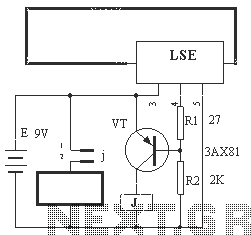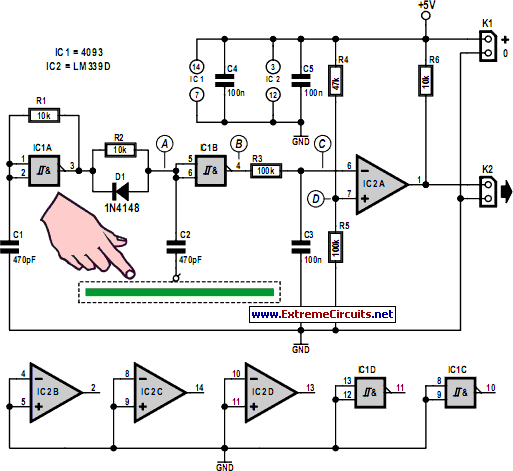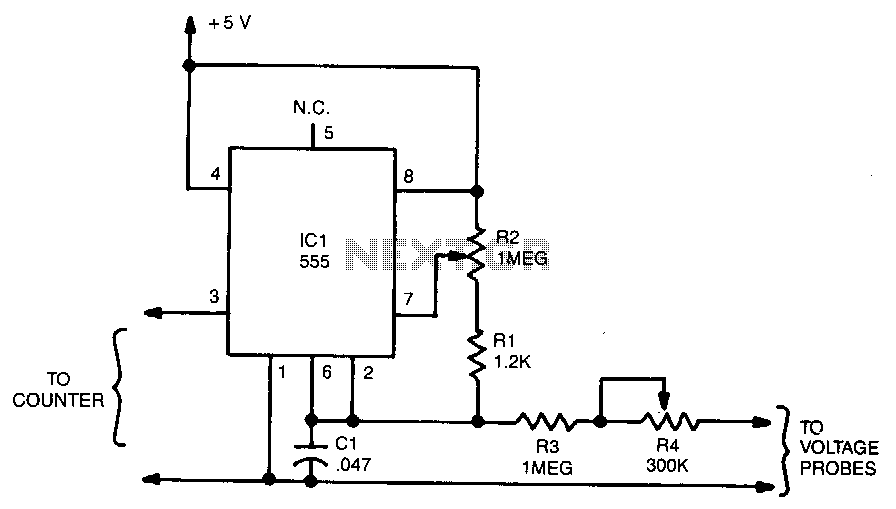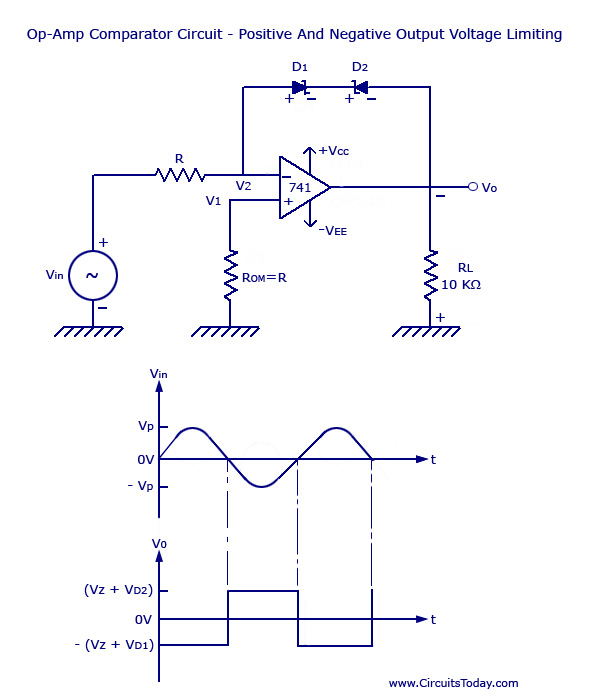
Simple 7-Segment Counter Circuit
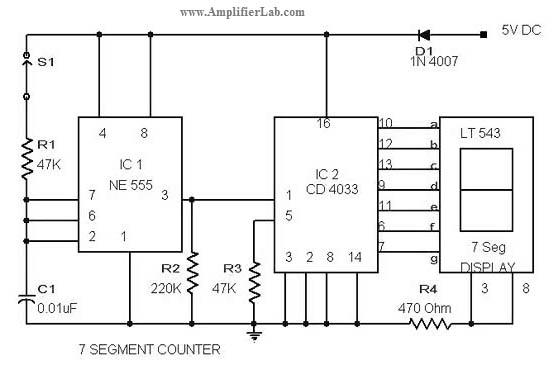
The circuit diagram of a 7-segment counter circuit has been published here. This circuit consists of the counter IC CD4033 as its central component.
The 7-segment counter circuit utilizing the CD4033 integrated circuit (IC) is designed to display decimal digits from 0 to 9 on a 7-segment display. The CD4033 is a BCD (Binary-Coded Decimal) counter that can drive a 7-segment display directly, making it an ideal choice for this application.
The circuit typically includes the following components: the CD4033 IC, a 7-segment display, resistors for current limiting, and a clock signal source, which can be generated by a 555 timer or any other clock generator circuit. The CD4033 operates by counting pulses received at its clock input, incrementing the count with each pulse.
The output of the CD4033 is in binary-coded decimal format, which is then decoded to drive the 7-segment display. Each output pin of the CD4033 corresponds to a specific segment of the 7-segment display, allowing the display to represent the counted number visually.
Power supply connections are also essential; the CD4033 requires a DC power supply, typically in the range of 3V to 15V. Proper grounding and bypass capacitors should be included to ensure stable operation.
In summary, the 7-segment counter circuit employing the CD4033 IC is a straightforward yet effective design for visual numerical representation, suitable for various applications such as timers, clocks, and digital counters.The circuit diagram of 7 segment counter circuit has been published here. This circuit consists of counter IC CD 4033 as its central part. 🔗 External reference
The 7-segment counter circuit utilizing the CD4033 integrated circuit (IC) is designed to display decimal digits from 0 to 9 on a 7-segment display. The CD4033 is a BCD (Binary-Coded Decimal) counter that can drive a 7-segment display directly, making it an ideal choice for this application.
The circuit typically includes the following components: the CD4033 IC, a 7-segment display, resistors for current limiting, and a clock signal source, which can be generated by a 555 timer or any other clock generator circuit. The CD4033 operates by counting pulses received at its clock input, incrementing the count with each pulse.
The output of the CD4033 is in binary-coded decimal format, which is then decoded to drive the 7-segment display. Each output pin of the CD4033 corresponds to a specific segment of the 7-segment display, allowing the display to represent the counted number visually.
Power supply connections are also essential; the CD4033 requires a DC power supply, typically in the range of 3V to 15V. Proper grounding and bypass capacitors should be included to ensure stable operation.
In summary, the 7-segment counter circuit employing the CD4033 IC is a straightforward yet effective design for visual numerical representation, suitable for various applications such as timers, clocks, and digital counters.The circuit diagram of 7 segment counter circuit has been published here. This circuit consists of counter IC CD 4033 as its central part. 🔗 External reference
